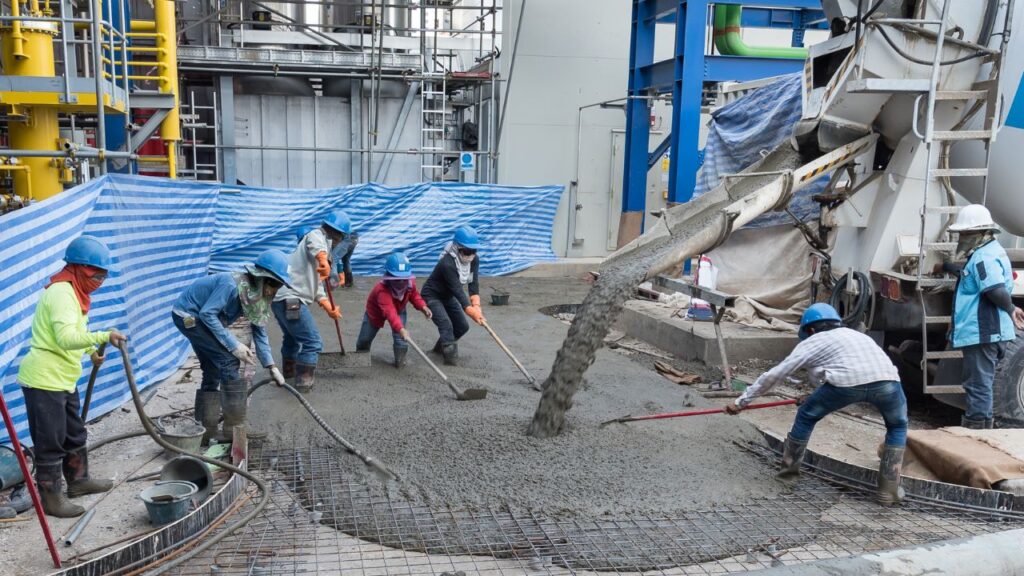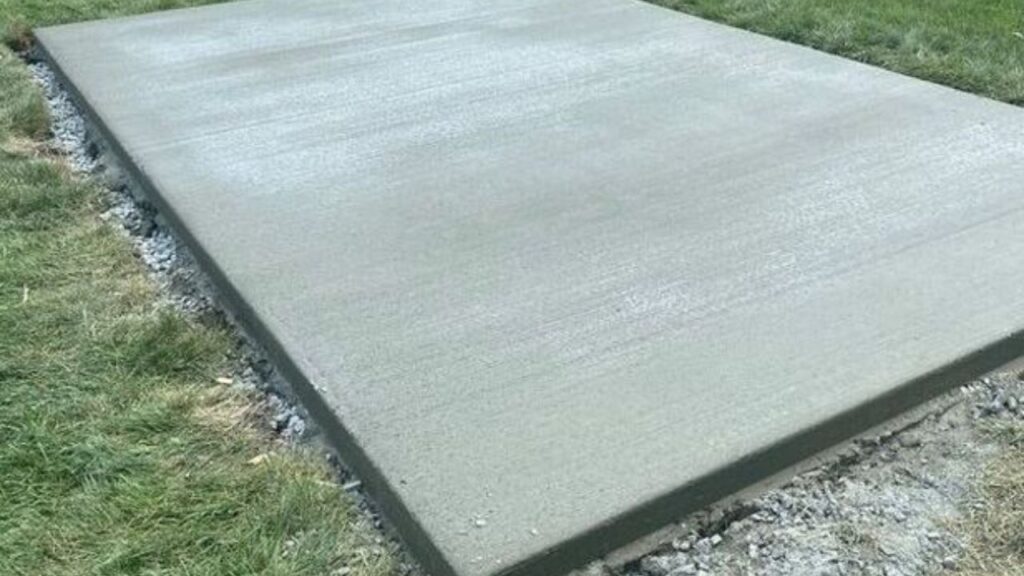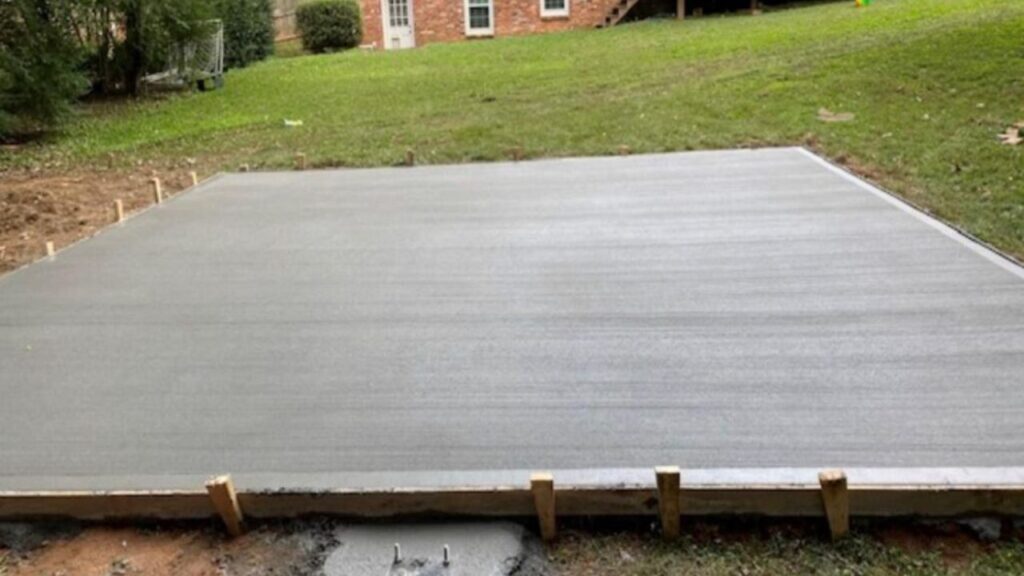Concrete Cost Estimator
Consult our experts for a concrete cost estimate tailored to your project. Make informed decisions and budget effectively with our assistance.

When it comes to embarking on a construction project, one of the fundamental aspects to consider is estimating costs accurately. This becomes even more crucial when you’re planning to lay a concrete pad. Whether it’s for a new driveway, a patio, or the foundation of a structure, having a concrete pad estimator tool at your disposal can save you both time and money. In this comprehensive guide, we will walk you through the importance of concrete pad estimation, how to use an estimator tool, and provide some valuable tips to ensure your project stays on budget.

Before delving into the specifics, it’s crucial to grasp the significance of estimating the cost of a concrete pad.
Estimating the cost upfront is a foundational step in effective project planning. This preliminary assessment empowers project managers, contractors, and stakeholders with a holistic view of the financial aspects involved in constructing a concrete pad. It’s not just about having a ballpark figure; it’s about breaking down the anticipated expenses into granular details. This includes meticulously considering costs related to materials, labor, equipment, permits, and potential contingencies. Armed with this comprehensive understanding, project planners can create a well-structured timeline that aligns with budgetary constraints. Moreover, it enables them to allocate resources more efficiently, ensuring that the right people and materials are available when needed. As a result, the project unfolds with a heightened level of organization, minimizing the risk of delays and uncertainties. In essence, a well-thought-out cost estimate acts as the compass that guides the project towards its intended goals.
Concrete Cost Estimator
Consult our experts for a concrete cost estimate tailored to your project. Make informed decisions and budget effectively with our assistance.

One of the primary advantages of employing a concrete pad estimator is its role in effective budget management. Consider it as a financial roadmap that spans the entire project lifecycle. By estimating costs with precision, you can set a realistic budget and, more importantly, adhere to it. The absence of accurate cost estimation can lead to potential financial pitfalls, such as overspending or facing unexpected expenses during the construction process. Such scenarios can have detrimental effects on project timelines and quality. However, when cost overruns are identified early in the planning stage, you gain the opportunity to take proactive measures. This may involve implementing cost-saving strategies or, if necessary, adjusting the project scope to align with your budget constraints. The power of concrete pad estimation doesn’t merely lie in financial prudence; it extends to enhancing your decision-making capabilities throughout the construction journey. Armed with precise cost estimates, you can make informed choices regarding materials, suppliers, contractors, and project milestones. In essence, concrete pad estimation isn’t just about staying within budget; it’s about achieving your construction goals with unwavering precision and financial stability, thereby safeguarding the overall success of your project.
Now that we’ve emphasized the importance of concrete pad estimation, let’s explore in greater detail how you can effectively utilize a concrete pad estimator for your construction project.
Before you can embark on the estimation process, it’s imperative to gather all essential project details meticulously. Start by measuring the dimensions of the pad area accurately. This involves not just length and width but also any irregularities or specific shaping requirements. Additionally, consider the type of concrete you plan to use, as this choice significantly influences costs. Furthermore, contemplate any additional features or specifications you have in mind. These could encompass reinforcements, such as rebar or mesh, or decorative elements like stamped patterns or coloring. The more comprehensive and precise your project information, the more accurate and reliable your estimate will ultimately be. Remember, the success of the estimation process hinges on the quality of the data you provide.
Selecting the appropriate estimator tool is a pivotal decision in the estimation process. You should ensure that the tool you choose is not only reliable but also user-friendly and tailored to your specific project requirements. Fortunately, there are numerous online tools available, many of which are free, simplifying the estimation process considerably. When making your selection, look for tools that allow you to input various parameters, such as the dimensions of the area, the desired thickness of the concrete, and the specific type of concrete mix you intend to use. A tool that offers flexibility and customization options will enable you to generate a more accurate estimate aligned with your project’s unique characteristics.
With all the necessary project data in hand, it’s time to input these details into the chosen estimator tool. Most calculators will require specific information, such as the total area dimensions in square feet or meters, the desired thickness of the concrete in inches or centimeters, and the precise type of concrete mix you plan to use (e.g., standard concrete, high-strength concrete, decorative concrete, etc.). Accurate data input is paramount to obtaining a precise estimate. Any inaccuracies at this stage can significantly impact the reliability of the final cost projection.
After inputting the project details, the estimator tool will provide you with an estimate of the total cost involved in your concrete pad construction. This estimate typically includes calculations for both materials and labor. Take the time to review the breakdown of costs carefully. Understanding how the estimate is structured will provide you with valuable insights into where your budget will be allocated. It allows you to make informed decisions regarding cost-saving measures, material choices, and labor considerations. Additionally, by comprehending the cost breakdown, you can communicate effectively with contractors, suppliers, and stakeholders, fostering transparency and accountability throughout the project’s lifecycle.

Ultimately, the estimation process is not just about arriving at a number; it’s about equipping yourself with the knowledge and tools needed to manage your project’s finances effectively and ensure its successful execution.
Before you embark on the estimation process for your concrete pad project, it’s essential to gather the following tools. These tools will prove indispensable in ensuring accuracy and reliability in your calculations, ultimately contributing to the success of your project:
A reliable measuring tape is the cornerstone of accurate measurements in your concrete pad estimation. Whether you’re dealing with a straightforward rectangular area or navigating the intricacies of irregular shapes and dimensions, a measuring tape is your go-to tool for capturing the critical data required for precise estimation. It ensures that you obtain the dimensions of the area you’ll be working on with the utmost accuracy. This level of precision lays the groundwork for an estimation process firmly rooted in real-world measurements, reducing the likelihood of costly errors during the construction phase.
In the realm of concrete pad estimation, precision is paramount. A calculator, particularly one equipped with advanced functions, becomes an indispensable tool in your estimation arsenal. This is especially true when you’re confronted with complex calculations involving irregular shapes, varying thicknesses, or different types of concrete mixes. A calculator empowers you to crunch the numbers with confidence, minimizing the margin of error and ensuring that your final cost projection is as accurate as possible. It serves as the bridge between raw measurements and actionable data for your project, enabling you to make informed decisions and allocate resources effectively.
While not always considered a fundamental tool, graph paper can prove to be a valuable asset in your concrete pad estimation process. It offers you a visual platform to sketch out the area you’ll be working on, providing a bird’s-eye view of your project’s blueprint. This becomes particularly useful when dealing with concrete pads featuring intricate shapes or when you desire a scaled drawing for reference. Graph paper allows you to map out the project area systematically, making it easier to account for various measurements, irregularities, and design factors. It enhances your overall understanding of the project, facilitating better planning and communication with contractors, architects, and other stakeholders. As a visual aid, graph paper can bridge the gap between conceptualization and execution, ensuring that your concrete pad project unfolds according to your vision.
Now, let’s delve into the core of the matter – calculating your concrete needs. This step-by-step estimation guide will ensure that you accurately determine the quantity of concrete required for your project.
Measure the Area: Begin by measuring the length and width of your concrete pad area in feet. Using a reliable measuring tape, record these dimensions with precision. This initial step forms the foundation of your estimation process, as it provides the fundamental data needed to calculate the concrete volume required for your project.
Calculate the Depth: Determine the desired depth of your concrete pad. This depth is typically measured in inches and plays a critical role in your estimation. It defines the thickness of the concrete layer you plan to pour. Ensure that you accurately measure and record this dimension, as it significantly influences the overall volume of concrete required.
Convert Measurements: To maintain consistency and accuracy throughout your estimation, convert all measurements to the same unit. While you measured the length and width in feet, the depth was likely recorded in inches. To simplify calculations, convert everything to cubic feet, which is the standard unit for concrete volume estimation.
Account for Wastage: Concrete estimations should always include a buffer for wastage. Concrete work can be unpredictable, and a certain amount is inevitably lost due to spillage, over-mixing, or other factors. A common practice is to account for approximately 10% wastage in your estimation. This ensures that you have enough concrete to complete the project without the risk of running short.
Calculate Total Volume: To find the total volume of concrete required, multiply the length, width, and depth measurements together. This simple mathematical operation yields the cubic footage of concrete needed to cover your designated pad area at the desired thickness.

Adjust for Formwork: If you plan to use formwork to shape your concrete pad, it’s essential to account for its volume separately. Formwork, such as wooden or metal molds, will displace a certain amount of space within the concrete structure. Subtract the volume occupied by the formwork from the total volume calculated in the previous step. This adjustment ensures that you accurately estimate the amount of concrete required to fill the space between the formwork
In this digital age, you can streamline and simplify the process of concrete pad estimation even further by harnessing the power of online concrete pad estimators. These digital tools offer a range of benefits that enhance the accuracy and efficiency of your estimation process.
Estimating the cost of a concrete pad is crucial for effective project planning and budget management. It provides project managers and stakeholders with a clear understanding of expenses, allowing for efficient resource allocation and timeline planning. Accurate estimation also prevents unexpected costs that can derail the project.
Concrete pad estimation is the foundation of project planning. It helps in breaking down anticipated expenses into granular details, including materials, labor, equipment, permits, and contingencies. With this information, project planners can create well-structured timelines and allocate resources efficiently, minimizing delays and uncertainties.
A concrete pad estimator acts as a financial roadmap for the entire project. It allows you to set a realistic budget and adhere to it. Accurate cost estimation helps identify potential financial pitfalls early, enabling proactive measures like cost-saving strategies or scope adjustments to stay within budget.
Using a concrete pad estimator involves gathering project information, choosing the right tool, inputting project details accurately, and calculating the costs. The process ensures that you have a precise estimate for materials and labor required for your project.
Tools needed for concrete pad estimation include a measuring tape for accurate measurements, a calculator for complex calculations, and graph paper for visualizing project blueprints. These tools ensure precise data collection and calculation.
Certainly, here’s a step-by-step guide for concrete pad estimation:
Online estimators are quick, convenient, and accurate. They handle complex shapes, perform precise calculations, and save time. Users can input project details, and the tool provides instant calculations, including total concrete volume and sometimes cost estimates.
You can find reliable online concrete pad estimators on reputable construction-related websites and software applications. Ensure that the website or tool is trustworthy and offers accurate calculations.
Understanding the significance of concrete pad estimation is paramount when embarking on any construction project. Accurate cost estimation serves as the cornerstone of effective project planning, enabling project managers and stakeholders to navigate the intricate financial aspects involved in constructing a concrete pad. It goes beyond providing a mere ballpark figure; it involves a meticulous breakdown of expenses, encompassing materials, labor, equipment, permits, and contingencies. This comprehensive understanding empowers planners to craft well-structured timelines and allocate resources efficiently, reducing the risk of delays and uncertainties. Precise estimation is instrumental in budget management, ensuring that projects stay within their financial constraints. The absence of accurate cost estimates can lead to overspending and unexpected expenses, potentially jeopardizing project timelines and quality. By identifying cost overruns early, proactive measures can be taken, such as cost-saving strategies or scope adjustments, aligning the project with budget constraints. In essence, concrete pad estimation isn’t merely a financial safeguard; it’s a strategic tool that guides projects toward success with precision and financial stability. Utilizing the right tools and online estimators enhances the accuracy and efficiency of this crucial process, streamlining the way construction projects are planned and executed.
Here I am going to share some steps to get your concrete cost estimate report.
You can send us your plan on info@estimatorflorida.com
Before starting your project, we send you a quote for your service. That quote will have detailed information about your project. Here you will get information about the size, difficulty, complexity and bid date when determining pricing.
We do concrete estimating and prepare a detailed report for your project. At last, you finalize the report and finish the project.



561-530-2845
info@estimatorflorida.com
Address
5245 Wiles Rd Apt 3-102 St. Pete Beach, FL 33073 United States
561-530-2845
info@estimatorflorida.com
Address
5245 Wiles Rd Apt 3-102 St. Pete Beach, FL 33073 United States
All copyright © Reserved | Designed By V Marketing Media | Disclaimer